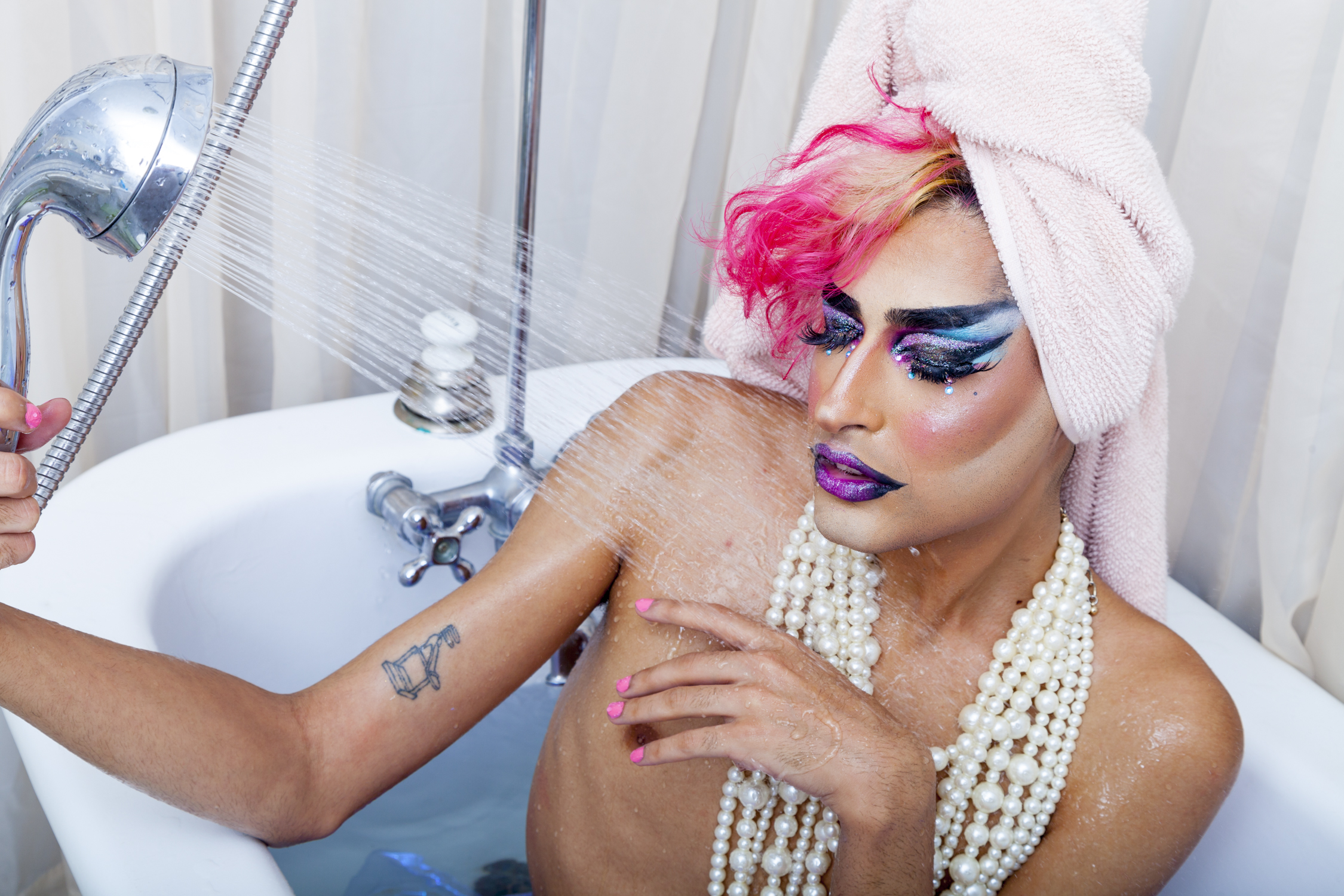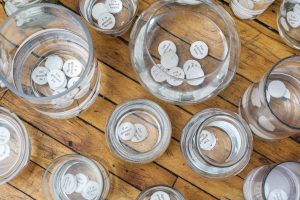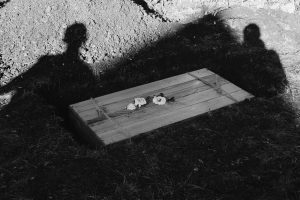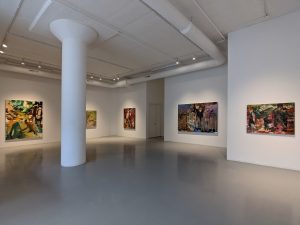Andie Meadows (Miss Meadows) is a queer photographer in Chicago whose photographic project, “Queens Who Bathe” immediately pulled me in to their overarching work. New and familiar faces, elegant poses, and dramatic looks occupy the project’s life on Instagram. What is also notable are the descriptions and mentions in the caption that illustrate the importance of collaboration and how artists, creatives, activists, and performers make up the vibrant and growing Chicago family.
I met with Andie at the WasteShed—a resource that provides repurposed arts, crafts, and materials—where we discussed queer history, building a space in their tub, and the vulnerability involved when being photographed.
This interview has been edited for length and clarity.
S. Nicole Lane: You said you plan events for the Chicago History Museum?
Andie Meadows: Yeah, so it’s called “The Out Committee.” It’s a volunteer committee that’s been going for fifteen years. I’ve been on it for two. They do a season of programs, usually it’s three or four. I’m working to get them to do more throughout the year, because I am not just gay for [Pride] season. I’m gay all year round.
We’re experimenting with other things. I’m giving a walking tour on the 12th of Boystown in order to play around with doing less intensive, large-scale events. The first program I coordinated this year was on queer fashion, called “Celebrating and Contextualizing Queer Fashion,” and we brought in Gnat, Rebirth Garments, and An Authentic Skidmark for our fashion show. Then we had a panel with a historian, JoJo Baby, and Ciera McKissick to talk about queer fashion and its history. Those historical roots have a lot to do with my work as well.

SNL: Do you want to talk about that a little bit?
AM: Sure! Yeah, I mean, coming from the perspective of a historian, I think about “the tub” as kind of like a blank space for folks to really explode their own personalities and also promote whatever work they’re doing. And it always amazes me that it doesn’t get repetitive or played out—everyone just totally takes over the space. Well, I build it—I build it for them. But it’s based on what I know about them, what they’re working on, and ideas that they give me. But yeah, I think of it as a snapshot of Chicago’s queer community, which is moving and shaking right now, which means that [the series] it will never end, because there will always be folks to document.
SNL: Yeah, so are most of the people in this specific project people that you know? Are they friends?
AM: It started out as friends. So I bought this condo in August, and it had a faucet tub. Abhijeet and J-for-Pay have been good friends of mine for a very long time—they’re drag queens—and they’ve both been doing a lot in the scene for making space for non-binary folks in drag and working to bring visibility to drag that isn’t just fishy and passing. So, I just had this beautiful tub with one of them in it and the shoot just went really well. It was so exciting that I wanted to do more of it. I just made a post on Instagram that folks could get in touch with me if they wanted to get in. And I was not prepared for [both laugh] the amount of response!
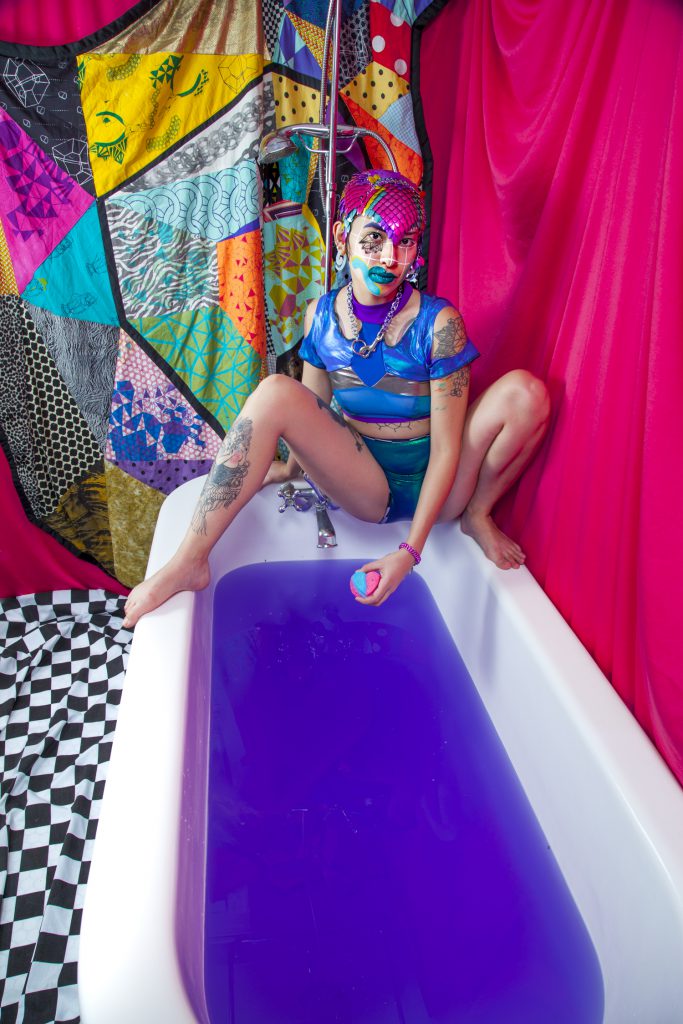
SNL: Yeah! People love that.
AM: Well, yeah! And when folks see the tub and see how versatile it is you can’t help but think, like, “Oh, what would I do in there?” Like, “What would it look like for me?” And I think that’s one of the reasons why folks get really engaged with it. I’ve since started prioritizing folks who have active projects in the works that need promoting to use it as a platform that’s informative as well as beautiful and community-oriented.
SNL: Yeah, I think it’s a really great snapshot of—obviously it doesn’t include everyone in the queer scene, not at all—
AM: I’m still working! [laughs]
SNL: No, no, I know. I’m just saying that when you scroll through your feed it’s like, “Oh my gosh! There’s so-and-so and there’s so-and-so,” and it makes you realize how beautiful and intimate the queer and nightlife community are.
AM: Yeah. Intimacy is another big part of it. I prefer shooting in the bathroom to a set because sets can be—for folks who are outside of entertainment or not used to being photographed— really intimidating. You don’t know what they mean, you don’t know what you’re getting yourself into. Everyone knows what a bath is and there’s this inherent comfort that you feel, and also vulnerability. I don’t know, like 80 percent of my job as a photographer is making people feel comfortable, which I think is a lot easier in a bathtub. Also, when they just walk in and I’ve built this sanctuary for them, that’s usually a really good moment. And it’s the bathroom I use every day. There’s vulnerability in that for me as well. Like, I empty my Diva Cup and pluck my chin hairs there. [both laugh] Yeah, it’s almost an even playing field of vulnerability, but obviously I do a lot of work to compensate for that on their end.
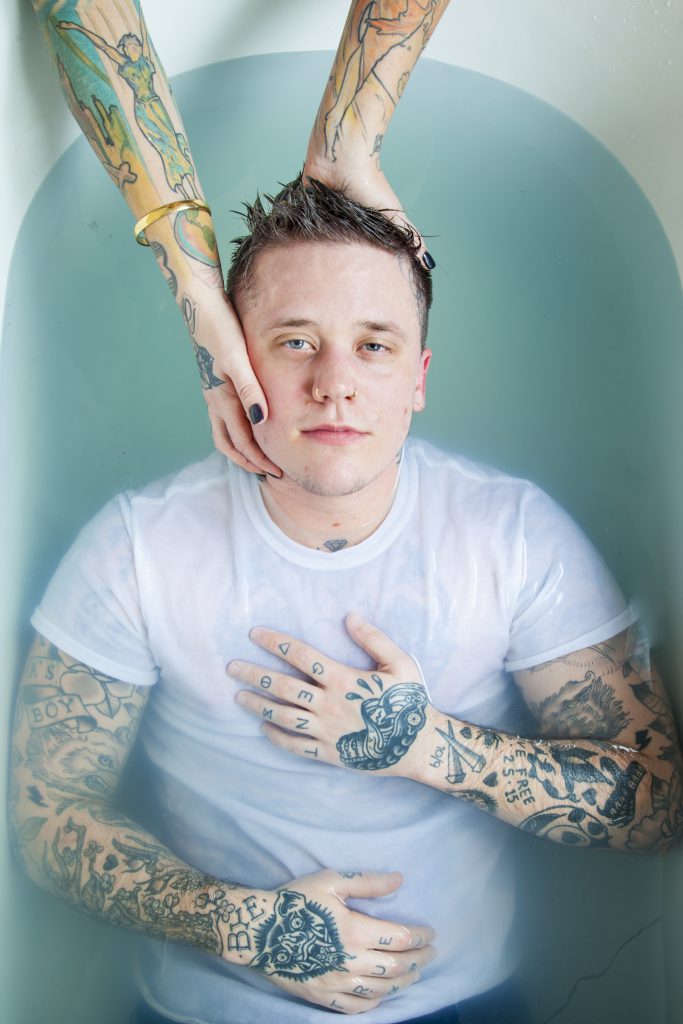
SNL: I think it’s also really amazing how diverse the sets are. I guess maybe because I know a lot of the people, and it’s like, “Oh, of course, this makes sense for this person.” But I feel like even if I didn’t know many of the subjects in the photographs, I could gather some information about them or about what they do. Which, obviously, is important. I mean, you’re the one creating this.
AM: Yeah. I start out asking, “What would be your ideal? Like, your absolute dream?” And then I go to get as close to that as possible, which is often a lot closer than folks would imagine.
I’m always surprised—there’s been a number of drag queens who, like, really wanted to get wet. Which is awesome. And even more vulnerable, because they spend so much time and energy on their looks. That they’re willing to get that wet for me is just really, really special.
SNL: Yeah, and it’s a great way to, obviously, learn about new people. And I like that you include what the person does and what they’re involved in within each caption.
AM: Yeah. It’s all about building platforms—the documentation of our community and building platforms for them. And every time I shoot someone new, that’s a new set of viewers that I get and therefore everyone else gets. That’s just the way to build a platform, just calling in as many folks as possible.
SNL: Totally, yeah. Backtracking a little bit, what’s your background? Are you from Chicago?
AM: No, I’m from rural Maryland. My family has a farm there. It’s very conservative. But it’s also 40 minutes away from D.C. It just gets really rural really quickly. I moved to Chicago for school—I went to the School of the Art Institute. I was kind of in photography, kind of in writing, kind of in performance. The photography department was not great—to me, anyway. It’s an awesome program.
While in the [photography] program, I would show queer work that was deeply political, and we would talk about form and not concept or politics. No one was quite willing to get into queer politics. I found a lot more activism in performance and writing. My thesis was a project called “Girls in Boystown,” which was when I started doing historical research, and I would go around and document femininity or lack thereof in Boystown. And that’s kind of when I fell into drag as well because that was the only place I saw femininity being celebrated. That’s when Abhijeet and J and I started becoming close. I would shoot them getting ready and then we’d go out to Roscoe’s Drag Race every Tuesday. [both laugh] This was before Berlin started doing amateur drag shows—Roscoe’s was kind of the one, and it was very pageant-y, very competitive, and kind of catty—very old-school. And then Trannika [Rex] kind of changed everything. “Please bring us your weirdness.” That was an amazing shift to see, particularly as I was studying the area’s history and realizing that women, trans folk, and queer folk have always been there, but they just haven’t had the economic capital to have lasting power or just the city wasn’t paying as much attention to them, because it was called “Boystown.” Yeah, that’s where all my historic research came from—I just wanted to know where the name came from. It came from this article, or this column, in the Windy City Times, called “Boystown.” It was a gossip column about the area, but it stuck. And, supposedly, business owners tried for years to change it, but…it didn’t work. [both laugh]
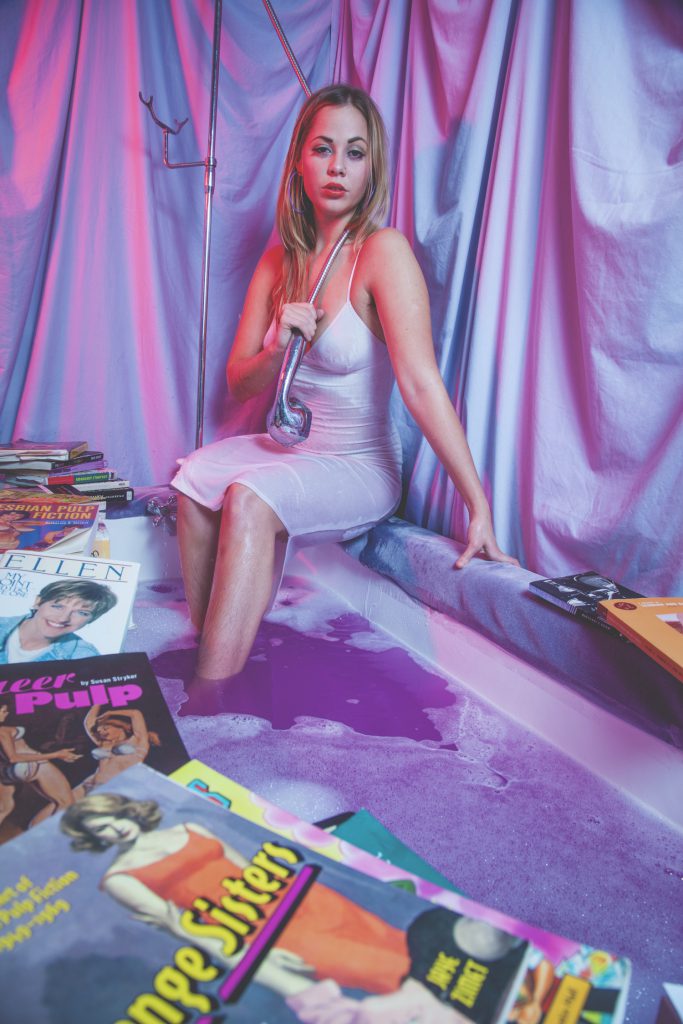
AM: On the Gerber Glass building, there was this spray painted—in my memory—it’s a mural, but it was just a tag, and it said “Lesbian Love.” I have a picture on medium-format film of that after they tried to whitewash it, or powerwash it, I guess. And you can still see it, but it’s not totally there. Like, the erasure is very clear.
I made a magazine called “Grope”—that was a play off of “GRAB,” which is a magazine that Boystown publishes—that had all my pictures of looking for girls in Boystown, in combination with the history of women in the area. And now, for a few years, I’ve been giving walking tours of the area that focuses on femme and non-cis-white-masculine narratives in the area through Chicago for Chicagoans, which are historical tours by Chicagoans for Chicagoans, and also the Chicago History Museum.
SNL: Cool. Yeah, I’d love to go on one of those tours.
AM: Yeah, there’s one on Thursday—tomorrow—but it’s supposed to rain. The one tomorrow’s going to be really awesome—I think we’re going to pick a rain date—but I’m giving it with Vitaliy Vladimirov, who is a city planner, an urban planner, and just has a lot of really awesome background on institutional gentrification and how infrastructure affects who occupies a neighborhood and what that means.
SNL: I think you mentioned this in your email, and obviously I can gather this just from talking to you, but obviously collaboration is really important. Do you want to talk about that a little bit? The importance of it or why it’s important to you?
AM: My work is about queerness, and so that’s a family, and if I’m not building platforms for my community, then I’m not doing things that are worthwhile. And everything is also just better when you’re doing it with other people and with other folks’ interests in mind.
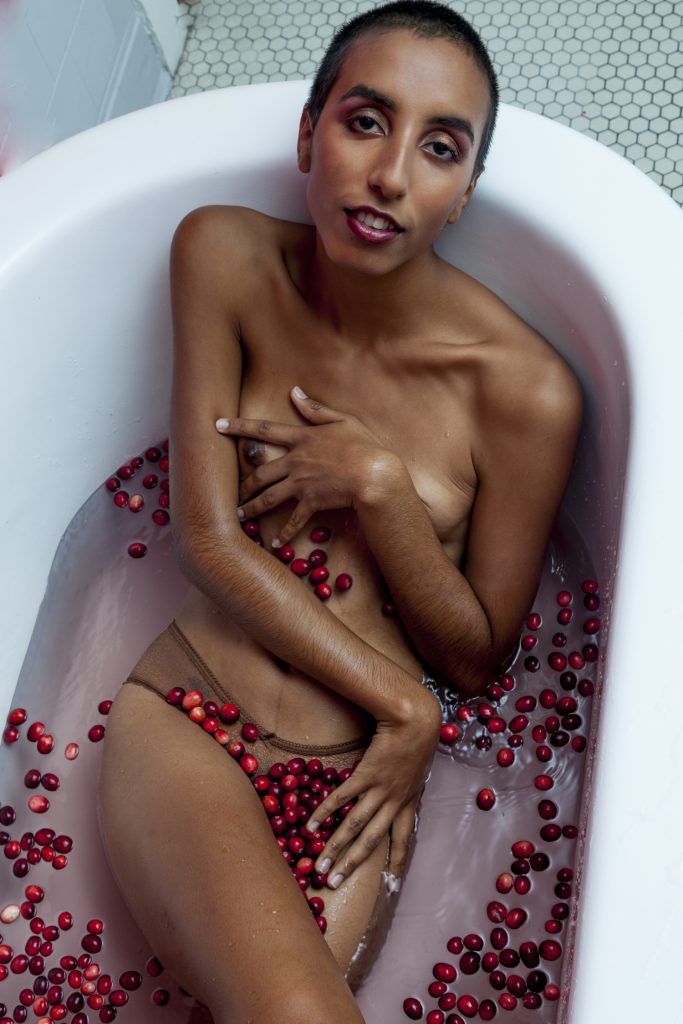
SNL: Photography is this really great medium where collaborating just kind of makes sense.
AM: For my work it can make sense, and one of the reasons I’ve slowed down on producing “Queens Who Bathe” is because I’m trying to find a lawyer to help me make some model releases—like, customized ones, because the standard free ones make it so, as a model, you kind of just sign over all of your rights to the photographer. And it doesn’t really take into account social media, account nudity, or, as a model, having agency over like, “It’s okay to put pictures of my nipples in a book, but it’s not okay to put it on your website or social media,” or whatever. I just feel like that’s so behind the times and very masculine-photographer norm, that you wouldn’t think to question. I want something a little more detailed and customizable, just like checkboxes that you can go through. Because it’s ridiculous. I shouldn’t have that kind of power over folks’ images. So that’s another element of collaboration that I’ve been thinking of, agency as a model, which is not something that folks are used to having. And folks who try to claim it get called “pushy” or then folks don’t want to work with them or something.
SNL: It becomes too “complicated” or–
AM: Exactly. Which should not be the norm. That’s a very, like, white masculine ownership over bodies, I think.
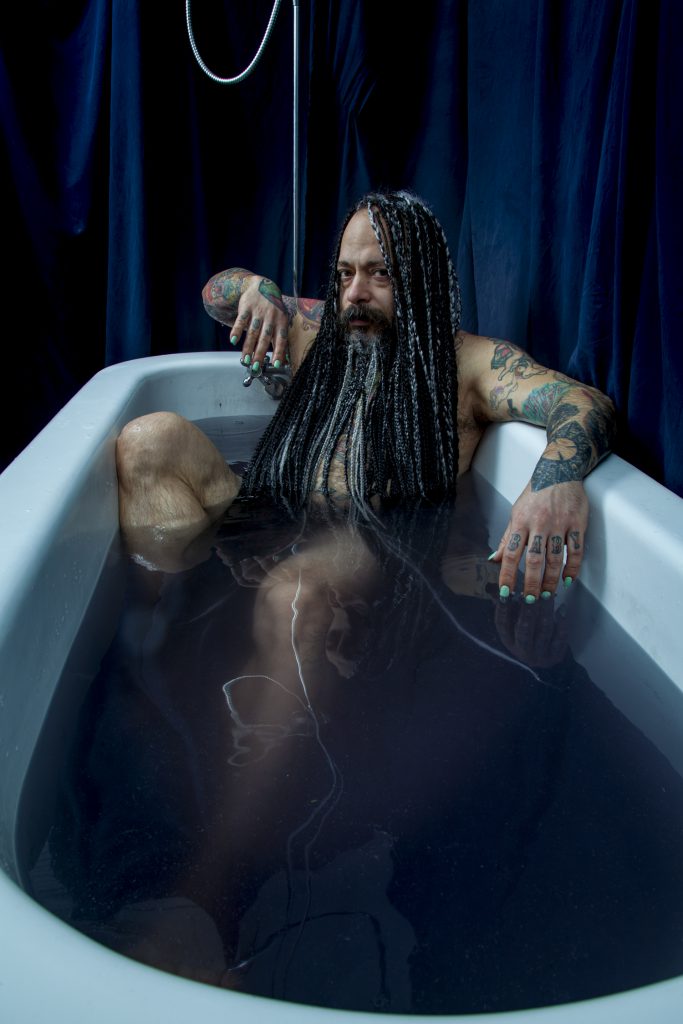
SNL: Have you always taken photos of people? I studied photography and I had a really difficult time actually collaborating, so it was the total opposite for me. I used myself as a subject a lot. How do you make people feel comfortable? Like, is that a relationship that you already have with the person, or–?
AM: Well, I think there’s a lot of groundwork that goes in ahead of time. Also, just talking about someone’s dreams with them gets them excited and invested, which is a really good starting point. Just constantly communicating and iterating boundaries and opening opportunities for folks to say that, because they’re not used to it. Also, just in general in the photography world, I think that we always need to be asking people before we touch them—which is not a standard practice! They don’t teach you that in school. That’s just crazy to me. Folks are always just so appreciative when you do. That’s probably one of the biggest things. There’s just a kindness and a softness and an understanding that you have to keep with people—and also a continuous dialogue and checking-in, because maybe something was okay and then it’s not. That’s allowed to change and there needs to be space for that. There’s also—working with the queer community—when I schedule shoots, I don’t schedule things after them, because folks are late, things come up, folks have feelings. And that’s just, like, no matter how professional I want to be, I think that being professional with the queer community means accommodating to that. So that understanding is something that has a lot to do with it as well, I think. And just building an environment for a person, that’s a lot of–
SNL: It’s like their space, it feels like their space.
AM: Mmm hmm. I think there’s a lot of logistical things, in terms of communicating, that happen, but the feeling of it comes from the filming space.
SNL: Yeah. Especially with other photographers it’s for their work, fully. It’s just solely for them, and so you’re just doing what they want. And your situation is totally different.
AM: Yeah, my work is nothing if I don’t have people to lift up and highlight.
SNL: What goes into creating this space?
AM: Places like this are really important. [points around The WasteShed] They always have these fabrics. I go to a lot of thrift stores looking for textiles for the drapes that go around the wall. Then usually whoever I’m photographing and I will brainstorm things that they would like in the tub or different ideas. Like, I have one on Sunday and they want to do an ice cream sort of thing. They have ice cream lids that they want to use as pasties. So that’s kind of enough for me to roll from there.
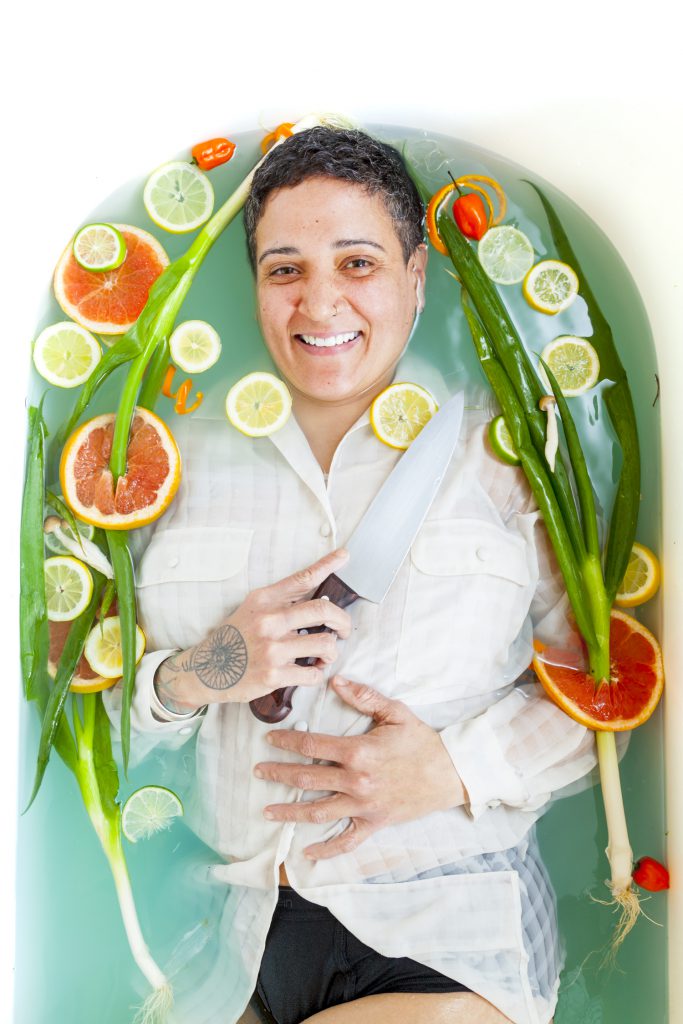
SNL: And what are some other projects you’re working on? Are you working on anything else? News you want to share?
AM: Sure. Yeah, the event at the History Museum is a big one. June 14th. It’s called Disruptive Touch: Queer Expression in Public Spaces. And we’re also going to have a market in conjunction with that. Yeah, Lucy Stoole’s going to bring her sex toys. Gnat’s going to be vending harnesses—and Emma Alamo, and a few other people. It’s like a naughty-leaning market, but not exclusively. It’s also a really awesome opportunity for young folks to share space with their elders. The History Museum’s audience is largely folks over sixty, who are Baby Boomers, and as queer people we just have so few opportunities to be in the same room as those folks. That’s another reason why I have continued to do historical work, just because I think that so often we feel isolated—like we’re reinventing the wheel, which is not the case. We just historically haven’t been well-documented, particularly in the mainstream. So, yeah, I would encourage anyone who is queer to pay attention to what the History Museum is doing with the Out Committee, and also the walking tours.
SNL: That’s awesome. Yeah. Does the History Museum have archives?
AM: They do. They’re not the most accessible. To go and access them I think it’s $10? There may be a student rate that is different. But, outside of that, there’s the Gerber/Hart Library up in Rogers Park, which is free, and they have archives. And it’s exclusively an LGBT library. It’s walking distance from the Leather Archives. It’s like “the Leather belt” up there. There’s the Leather Archives and the Jackhammer and also Gerber/Hart. Which, I think, they’re putting a Howard Brown into that building as well. It’s a new building that they’ve been working on for a few years.
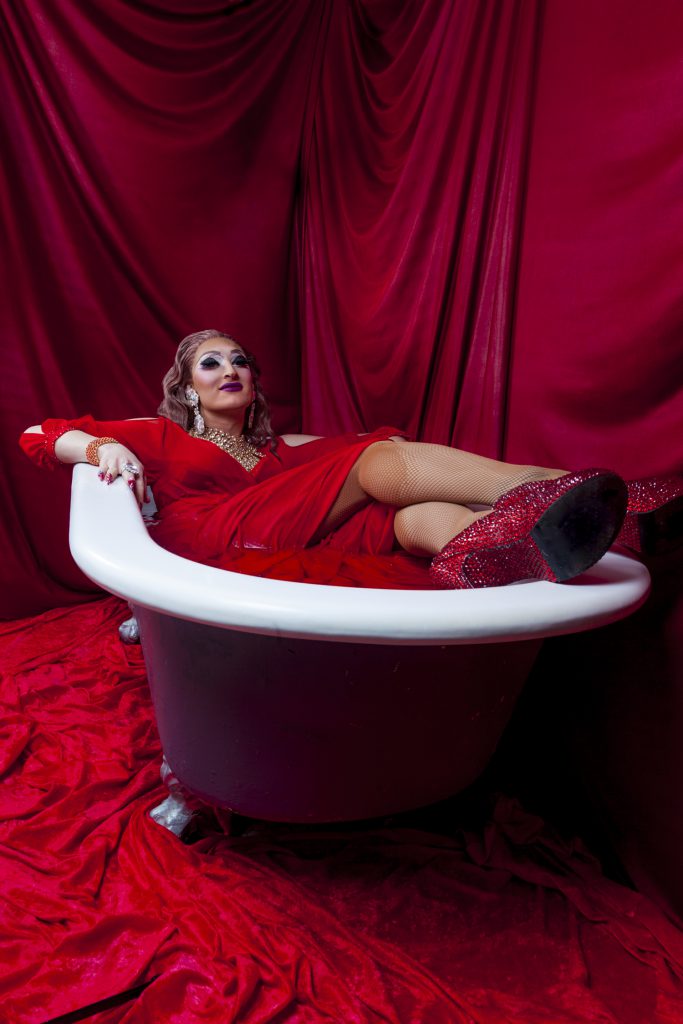
Featured Image: Photo of Abhijeet. The figure has on a large string of pearls around their neck. They have a towel wrapped around their head with pink hair sticking out from the top left. The image is in horizontal position and they are pointing the adjustable shower head towards their face with water spraying on their makeup. Photo by Andie Meadows.
 S. Nicole Lane is a visual artist and writer based in the South Side. Her work can be found on Playboy, Broadly, Rewire, Healthline, and other corners of the internet, where she discusses sexual health, wellness, and the arts. Follow her on Twitter.
S. Nicole Lane is a visual artist and writer based in the South Side. Her work can be found on Playboy, Broadly, Rewire, Healthline, and other corners of the internet, where she discusses sexual health, wellness, and the arts. Follow her on Twitter.
Photo by Devon Lowman.
